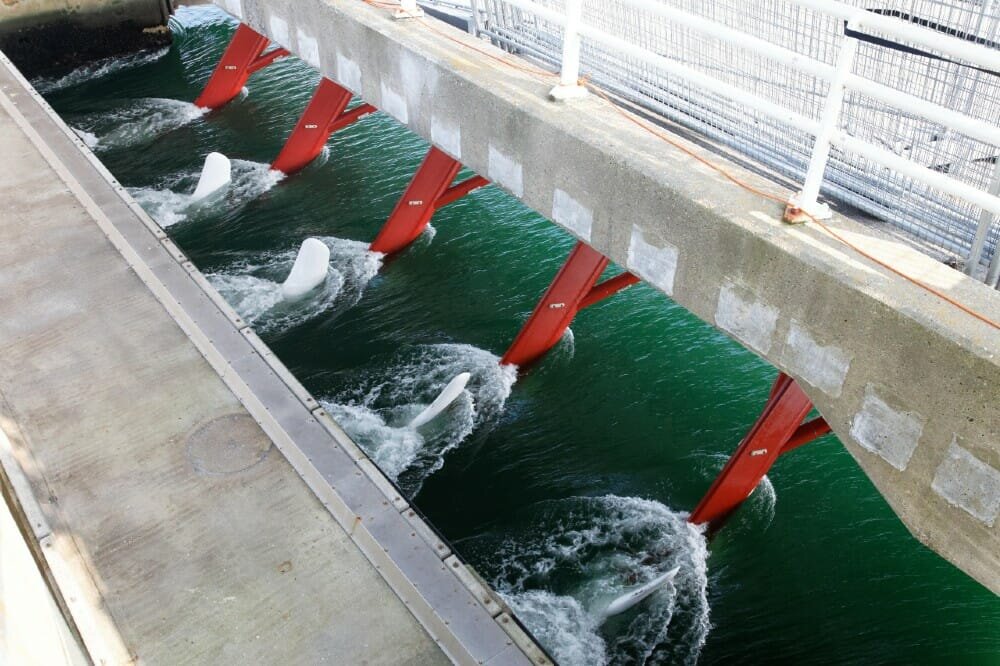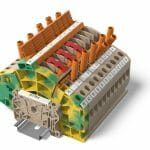~ The role of automation in maximising tidal power generation efficiency ~
Water is one of our greatest and most abundant resources. Comprising more than 70 per cent of the planet’s surface, water plays a vital role in everything from cleaning and sanitation to processing food and drinking. It is also capable of supporting renewable energy generation, with hydropower and tidal power being underutilised in the UK. Here, Beth Ragdale, product manager at energy control system expert Beckhoff Automation UK, explains the role of automation technologies in improving tidal energy generation.
2020 was a landmark year for the UK’s sustainability and clean energy goals. It marked the UK’s greenest year for electricity on record according to the National Grid Electricity Systems Operator (ESO), whose data suggests that average carbon intensity was 181 gCO2/kWh. Although the COVID-19 lockdowns undoubtedly played a hand in reducing demand and usage, another key factor is that renewables were the leading source of energy generation for the first time.
According to a report by energy thinktank Ember, 2020 saw the UK’s renewable electricity outpace fossil fuel generation for the first time, with combined power from renewables accounting for 42 per cent of electricity. This was only one per cent higher than power from coal and gas plants, but it marks a significant step forward for renewable energy.
Increasing the uptake and use of renewable energy in the years ahead — particularly to meet the UK Government goals of a 68 per cent reduction in emissions by 2030 — involves increasing renewable generation capacity. That means not only improving and expanding sites and installations of existing renewable energies, such as the wind farms that generated a quarter of UK energy in 2020, but also making greater use of underutilised resources.
Hydropower and tidal energy are among the underutilised resources. In 2020 the two combined generated a total of 6.34 TWh of power based on UK Government data, just five per cent of the 120.3 TWh produced by renewables that year. In a letter to Kwasi Kwarteng MP, UK Secretary of State for Business, Energy and Industrial Strategy (BEIS), in March 2021, the Environmental Audit Committee (EAC) noted that tidal power has significant potential in the UK but is currently lacking in policy support.
One of the benefits of tidal power noted by the EAC is “renewable power generation based on observable and reliable tidal patterns, delivering consistent output to the grid at predictable intervals”. This predictability is coupled with tidal currents generating relatively more energy than wind, due to the increased density of water in comparison to air. These two factors together highlight the potential of tidal energy technology, as long as the supporting technology is efficient.
Controlling the tide
There are several types of tidal generation technologies, but the most popular are tidal turbines that catch the current. Much like wind turbines, these installations are most effective if they have an actively adjustable pitch and yaw, to allow them to reposition to capture the ebb and flood phases of the tide most effectively. These adjustments require a control system that can support quick reconfiguration of system positioning.
Similarly, underwater structures are, by the nature of where they are installed, difficult to assess for faults and damage, which means that real-time condition status and event monitoring are valuable for tidal power operators. Without this information, it’s possible for damaged tidal systems to fail and generate no energy — as was the case with a Welsh tidal project in 2016, which stopped generating electricity after three months and was not removed for several more months.
The need for real-time control and monitoring of tidal projects is not dissimilar to wind turbines, so it’s possible for operators to benefit from the same control technologies. For example, Beckhoff developed a specific module for its TwinCAT 3 automation platform that is designed specifically for turbine-based energy generation application.
Despite its name, the TwinCAT 3 Wind Framework is ideal for tidal applications. The module allows monitoring of all components, offering error detection, event management, error handling and reporting, with high speed data communication based on the EtherCAT protocol. Building on the core TwinCAT 3 software, the Wind Framework also supports simple and fast configuration and programming in a PLC environment, and can be integrated with the control functions of the tidal installations.
The inclusion of a fast automation platform in tidal power generation means that operators can immediately identify any faults that occur, whether they are with the mechanical components of a tidal barrage or the sonar systems used to detect marine life. This allows for rapid rectification of problems or potential issues, so power continues to be generated. Operators can then also adjust turbines in response to current direction, maximising power generation.
With the abundance of water on Earth and the fortune of the UK being an island, tidal power has a significant untapped potential to support the green energy transition. With the UK’s ambitious decarbonisation goals, greater adoption of tidal projects — with effective automation to ensure availability and maximum generation — is vital so the UK can avoid treading water in its renewable energy aims.








